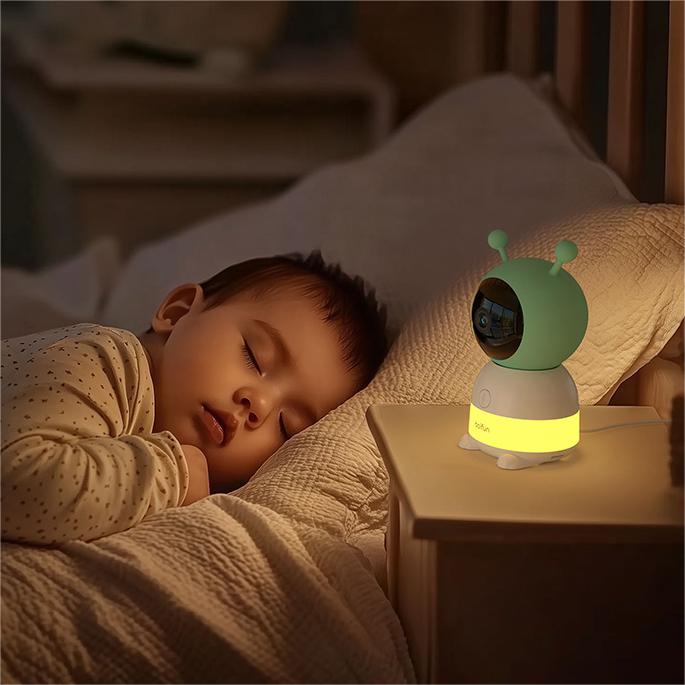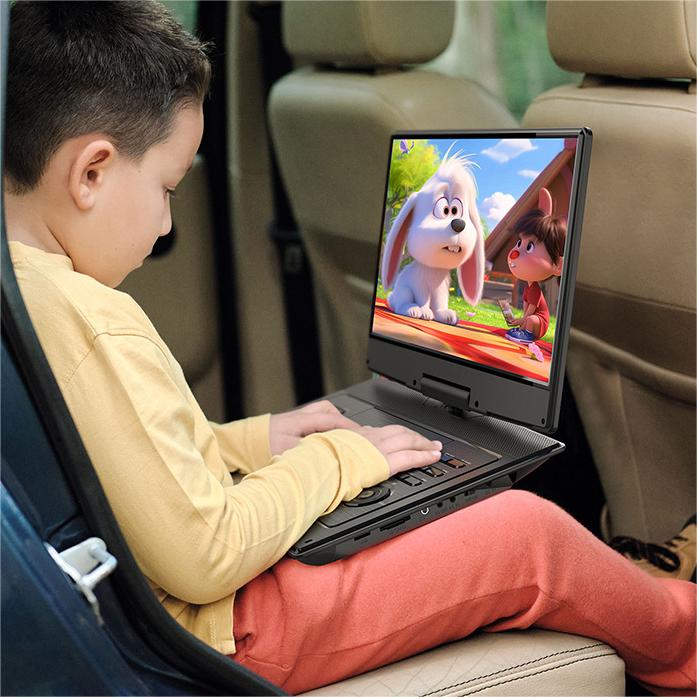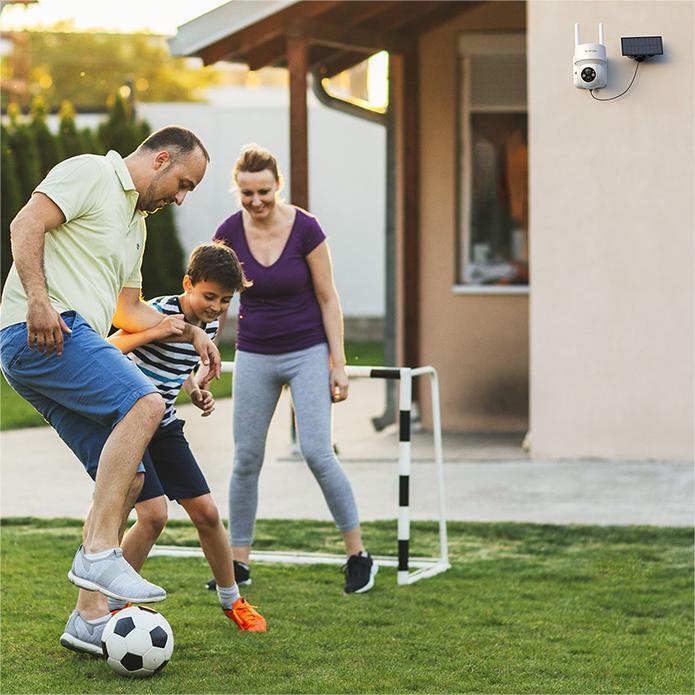
When do babies start sleeping through the night?A Guide to Baby's Sleep Stages
Every new parent longs for their baby to sleep through the night as soon as possible. However, babies aren't born perfectly sound sleepers; their sleep patterns change over time. Understanding the natural patterns of infant sleep development and using modern parenting tools like baby monitors can help us better navigate the challenges of each sleep stage. Below, we'll detail the three stages of infant sleep and how using a baby monitor can improve parenting.
Stage 1: Neonatal period (0-3 months) - Establishing basic sleep stages
Sleep Characteristics: Newborns require 14–17 hours of sleep per day, but only sleep for 2–4 hours at a time. Because their stomachs are small, they need to eat every 2–3 hours, and their circadian rhythms haven't yet established. Therefore, this stage is very tiring for mothers, who often have difficulty sleeping through the night and require regular feedings. During this period, infants spend 50% of their sleep in active REM sleep, making them prone to startle reflexes, whimpering, and other noises.
Monitor Usage Tips
1. Reduce Ineffective Checks: The high-definition camera and cry detection feature allow you to distinguish whether your baby is truly awake and needs feeding, or simply making normal sleep noises. Avoiding excessive disturbances helps your baby learn to connect with their sleep cycles.
2. Night Vision Monitoring: Choose a monitor with infrared night vision. Even in complete darkness, you can clearly see if your baby is spitting up, being covered by a blanket, or other safety hazards.
3. Temperature and Humidity Monitoring: Some high-end monitors come with temperature and humidity sensors that help you adjust the room temperature (ideally 20-22°C) and humidity (ideally 40%-60%) to prevent unpleasant environments from disrupting your baby's sleep.Boifun baby monitor is equipped with temperature and humidity monitoring function, always paying attention to the baby's sleeping environment
Practical advice: Place the monitor in the best observation position, usually 1.2 meters to 2 meters away from the baby to ensure that the baby's whole body can be seen (you can use a baby monitor stand to place the camera in front of the crib) to facilitate quick diaper changing and feeding at night.
Stage 2: 3-6 months - transition to regular sleep
Sleep Characteristics: During this stage, babies' total daily sleep time decreases compared to before and begins to develop a day-night rhythm, with consecutive nighttime sleep duration extending to 5-6 hours. However, around 4 months, babies may experience a "sleep regression," which occurs when they wake more frequently during the night and sleep less during the day. This is a normal part of brain development. During this period, babies begin to learn to self-soothe, with single sleep sessions extending to 50-60 minutes.
Monitor usage tips
1. Identify need-based night awakenings: Observe your baby's behavior during night awakenings through a monitor: Loud crying and chewing on hands may indicate hunger, while humming with eyes closed may require gentle patting and soothing. This will help you adopt appropriate responses.
2. Sleep Data Analysis: Choose a monitor with intelligent analysis that records your baby's sleep schedule and night awakening patterns, helping you identify the optimal time to adjust their sleep schedule.
3. Gradual Adjustment: When your baby wakes at night, observe them through the monitor for a few minutes to give them the opportunity to learn to self-soothe, rather than immediately intervening.
Special note: At this stage, you should start paying attention to sleep safety and make sure there is no soft bedding in the crib. The motion detection function of the monitor can help you know whether the baby's sleeping position is safe at any time.Boifun baby monitor has the most advanced AI automatic tracking function, which can track the baby's position at all times.
Stage 3: 6-12 months – Consolidation of full-night sleep
Sleep Characteristics
Most babies can sleep for 10-12 hours straight during this stage. With the introduction of solid foods, the need for nighttime feedings decreases. However, gross motor development (such as learning to crawl and stand) may cause short-term sleep regressions. Separation anxiety may also affect sleep quality.
Monitor usage tips
1. Remote Soothing: The monitor with two-way voice control allows you to soothe your baby with your voice, eliminating the need to enter their room every time they wake up at night and helping them learn to fall asleep independently.
2. Long-Term Trend Analysis: The monitor records sleep data, allowing you to distinguish between temporary sleep regressions and sleep habits that require adjustment.
3. Safety Monitoring: As your baby begins to stand, the monitor can help you identify potential falls and adjust the crib height accordingly.Boifun's baby monitor allows you to set custom monitoring areas. If your baby wanders out of range, an alert will sound on the monitor and app, making it easier to monitor your baby.
Experts suggest: At this stage, you can start to establish a more fixed bedtime soothing method, such as bath-story-goodnight kiss. A monitor can help you observe your baby's response to these soothing methods and find the most suitable soothing method.
Precautions for safe use of baby monitors
1. Device Selection: Choose a product with a wired connection or DECT technology to reduce wireless radiation. Ensure night vision resolution is at least 720p.
2. Mounting Location: The camera should be 1-2 meters from the baby's crib to ensure full coverage and avoid safety hazards such as power cords. Using a baby monitor stand makes it easier to position the camera correctly.
3. Moderate Use: Monitors are helpful tools for effective parenting, but checking in on your baby through a monitor is no substitute for in-person checkups, and daily interaction with your baby is also crucial.
Remember that every baby's sleep rhythm is different. Some babies may sleep six hours at three months old, while others may not until they are nine months old. The key is patience, adapting to your baby's rhythm, and using technology judiciously, but not excessively. I believe that with scientific parenting methods and the right tools, both you and your baby can achieve better sleep quality.









